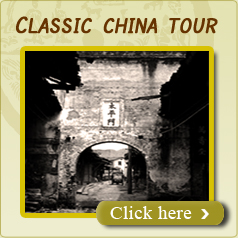Museum of Luoyang Eastern Zhou Royal Horse and Chariot Pits

Museum of Luoyang Eastern Zhou Royal Horse and Chariot Pits is located northeast of the Emperor City of the Easten Zhou Relic on the newly constructed Wangcheng Square in downtown district. It is a special museum which mainly displays the giant horse and chariot sacrificial pit of Eastern Zhou Dynasty on its original site. Besides the latest excavations unearthed from the kings tomb and some valuable relics of Eastern Zhou Dynasty, the brief introduction of the Emperor City is also included.
The whole museum covering 1,700 square metres,is diveded into two sections. Entering the gate,you will see the No.1 section immediately.This section consists of four parts. The first part is a map which showing the location of the five ancient capitals.The second introduces the Royal City of the Eastern Zhou Dynasty.
Going westward through a passage, you will get to the No.2 section, the giant house and chariot sacrificial pits of Eastern Zhou Dynasty exhibition room. What is displayed here are two of the 17 carriage and horse sacrificial pits excavated by archaeological personnel over 2002 and 2003. These archaeologists diggings at Luoyang are a mysterious find preserved perfectly, with six horse skeletons still tied to the chariot they were pulling.
The one on the north is 42.6 metres long and 7.4 metres wide,which has rarely been found anywhere else across the country. Furthermore,a much more marvelous attraction of the pit is that all carriages were arranged in double columns which seemingly presented a gorgeous view of the royal families journey. And, what catches people's attention most is the Tianzijialiu chariot or "emperor riding six", which offers us enough evidence in a clear and direct way for the precious records of description about the kings carriage pulled by six horses by ancient sources.
With its excellent cultural relics exhibition and marvelous scene, Museum of Luoyang Eastern Zhou Royal Horse and Chariot Pits widely shows the long history and prosperous culture enjoyed by the capital city in Eastern Zhou Dynasty to the world. It will certainly be the valuable material culture serving as a window opened for the world through which the competiveness of Luoyang will be improved to a higher level and a developing Luoyang will be better known by people both at home and broad.





